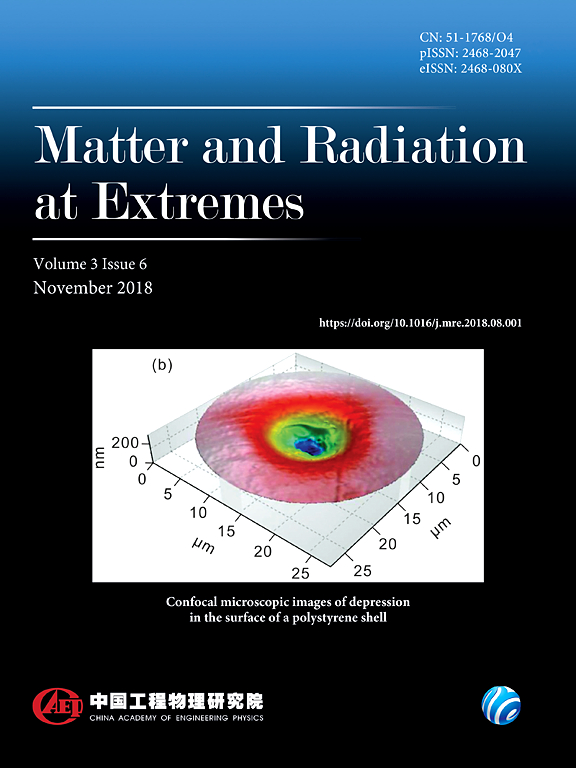用角非相干光抑制受激拉曼散射,使激光系统在时间、空间和角度的所有维度上都不相干
IF 4.8
1区 物理与天体物理
Q1 PHYSICS, MULTIDISCIPLINARY
引用次数: 1
摘要
激光等离子体不稳定性(LPI)是激光驱动惯性约束聚变(ICF)实现高增益可预测和可重复聚变的主要障碍之一。在本文中,我们首次用三维粒子在胞内模拟的方法分析并证实了角非相干对不稳定性增长率的抑制作用,这种抑制作用比通常用于ICF研究的众所周知的时空非相干所提供的抑制作用要强得多。对于我们计算中使用的模型,受激拉曼散射与驱动脉冲之间的最大场比从具有单个非零拓扑电荷的拉盖尔-高斯脉冲的0.2下降到具有角动量扩散和随机相对相位的超光弹簧的0.05。特别是,角不相干不会引入额外的不希望的热电子。这为利用具有角动量扩散的光来抑制LPI提供了一种新方法,并为在时间、空间和角度的所有维度上具有非相干超光弹簧的低LPI惯性聚变能激光系统铺平了道路,并为使用更长的波长激光进行惯性聚变能打开了大门。本文章由计算机程序翻译,如有差异,请以英文原文为准。
Suppression of stimulated Raman scattering by angularly incoherent light, towards a laser system of incoherence in all dimensions of time, space, and angle
Laser–plasma instability (LPI) is one of the main obstacles to achieving predictable and reproducible fusion at high gain through laser-driven inertial confinement fusion (ICF). In this paper, for the first time, we show analytically and confirm with three-dimensional particle-in-cell simulations that angular incoherence provides suppression of the instability growth rate that is additional to and much stronger than that provided by the well-known temporal and spatial incoherence usually used in ICF studies. For the model used in our calculations, the maximum field ratio between the stimulated Raman scattering and the driving pulses drops from 0.2 for a Laguerre–Gaussian pulse with a single nonzero topological charge to 0.05 for a super light spring with an angular momentum spread and random relative phases. In particular, angular incoherence does not introduce extra undesirable hot electrons. This provides a novel method for suppressing LPI by using light with an angular momentum spread and paves the way towards a low-LPI laser system for inertial fusion energy with a super light spring of incoherence in all dimensions of time, space, and angle, and may open the door to the use of longer-wavelength lasers for inertial fusion energy.
求助全文
通过发布文献求助,成功后即可免费获取论文全文。
去求助
来源期刊

Matter and Radiation at Extremes
Physics and Astronomy-Atomic and Molecular Physics, and Optics
CiteScore
8.60
自引率
9.80%
发文量
160
审稿时长
15 weeks
期刊介绍:
Matter and Radiation at Extremes (MRE), is committed to the publication of original and impactful research and review papers that address extreme states of matter and radiation, and the associated science and technology that are employed to produce and diagnose these conditions in the laboratory. Drivers, targets and diagnostics are included along with related numerical simulation and computational methods. It aims to provide a peer-reviewed platform for the international physics community and promote worldwide dissemination of the latest and impactful research in related fields.
 求助内容:
求助内容: 应助结果提醒方式:
应助结果提醒方式:


